
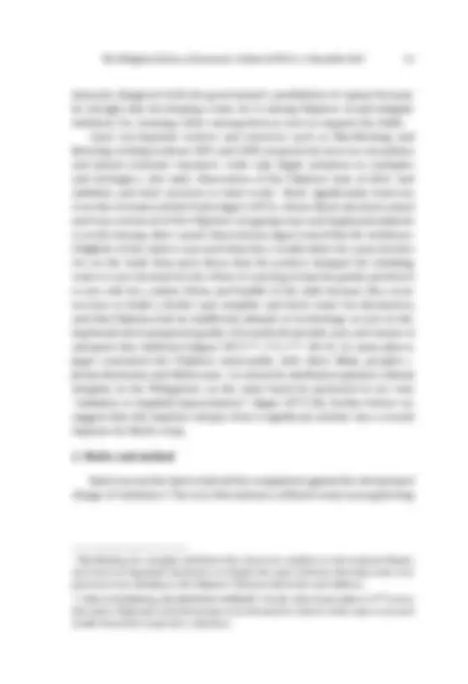
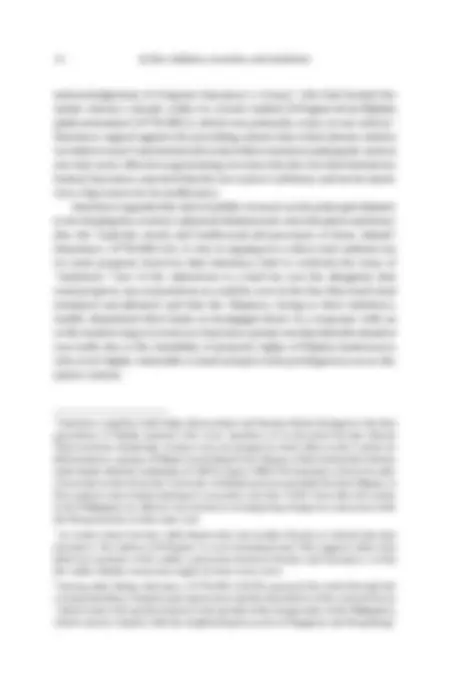
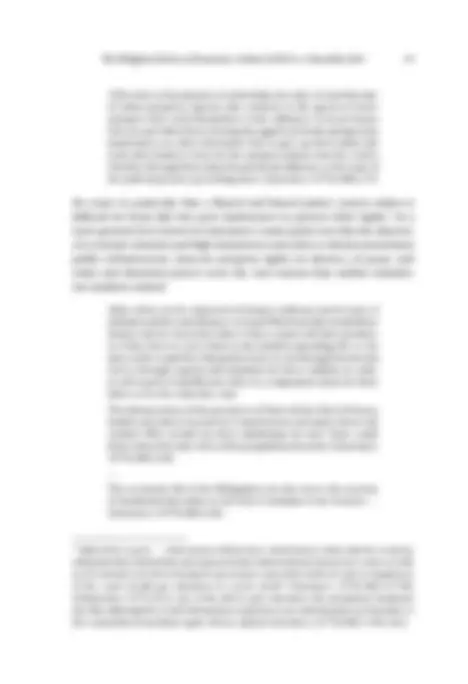
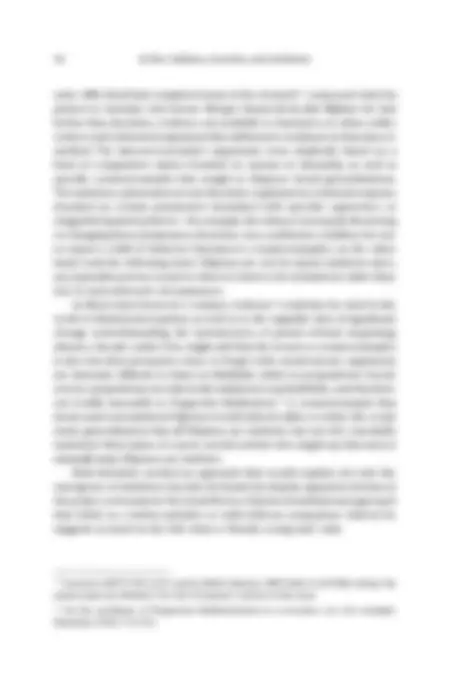
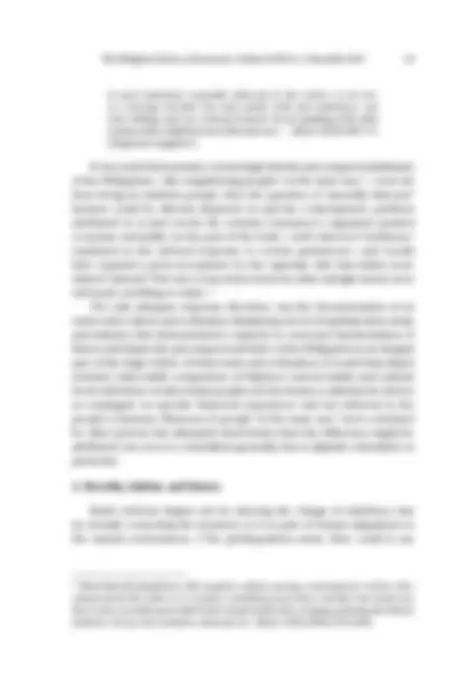
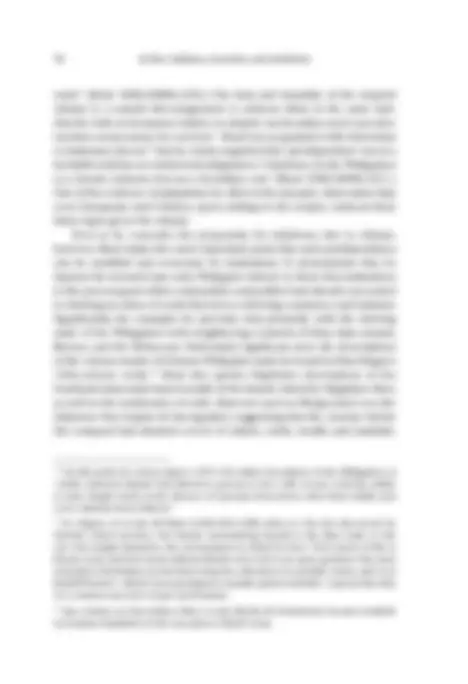
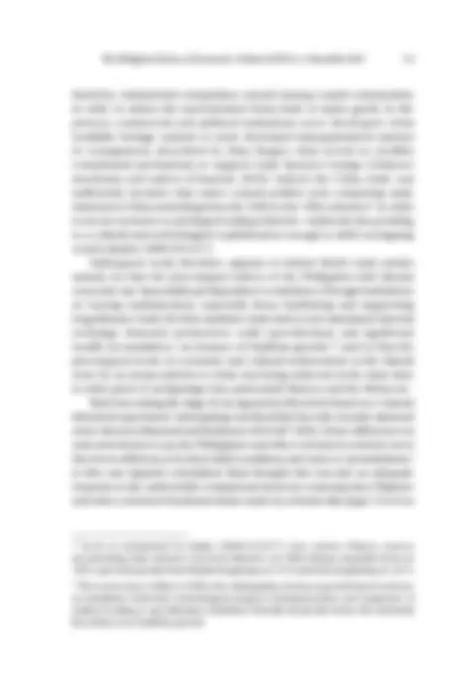
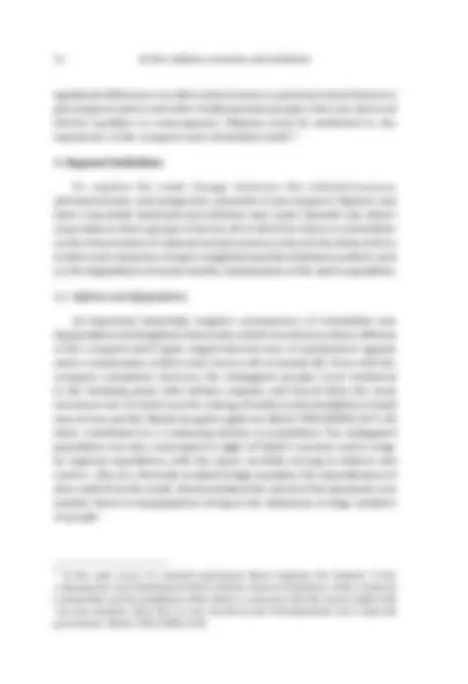
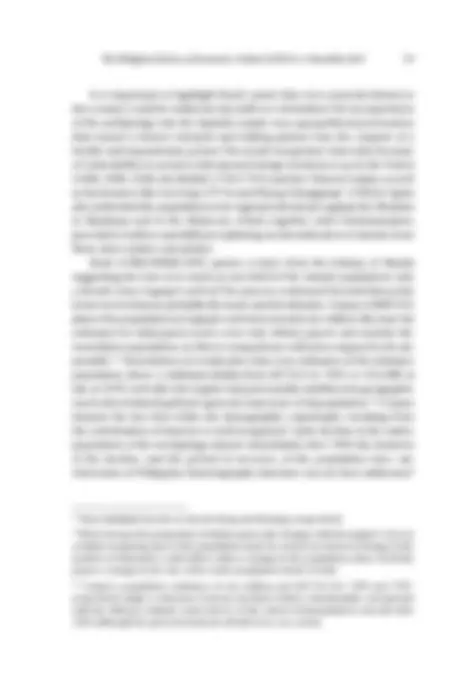
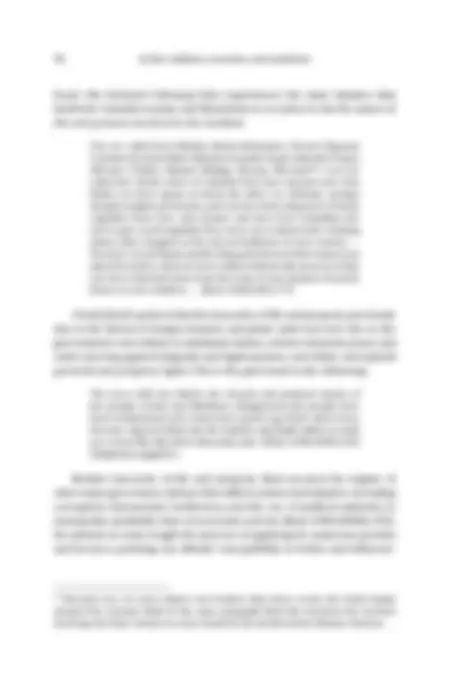
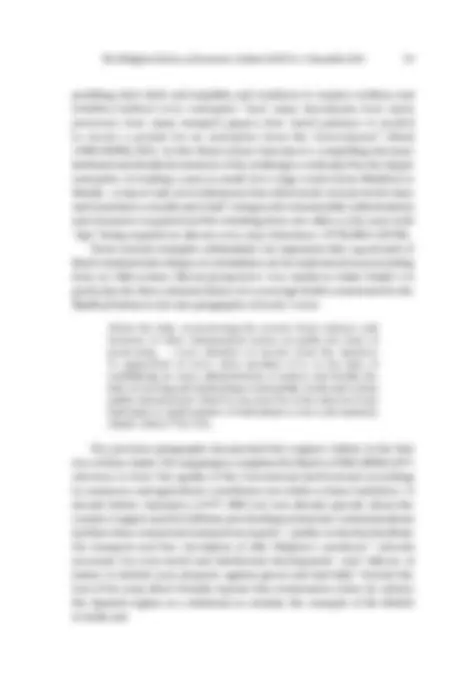
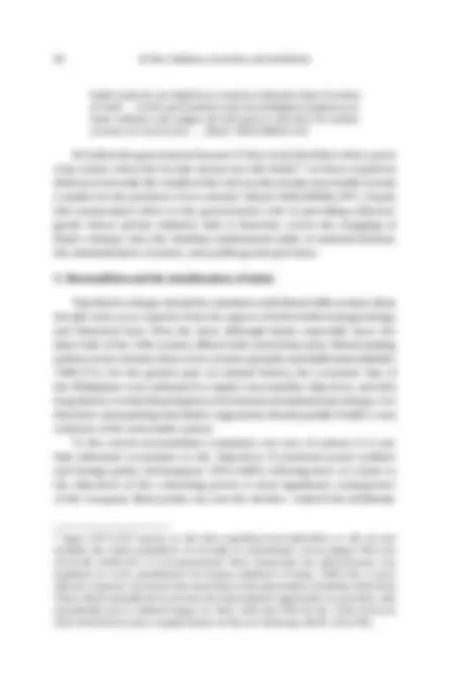
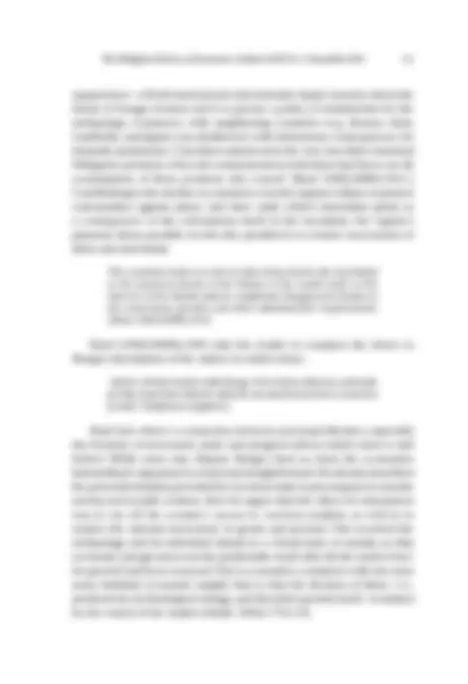
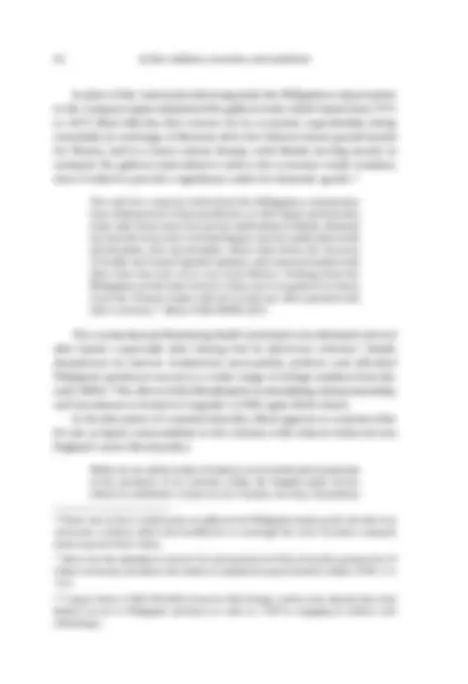
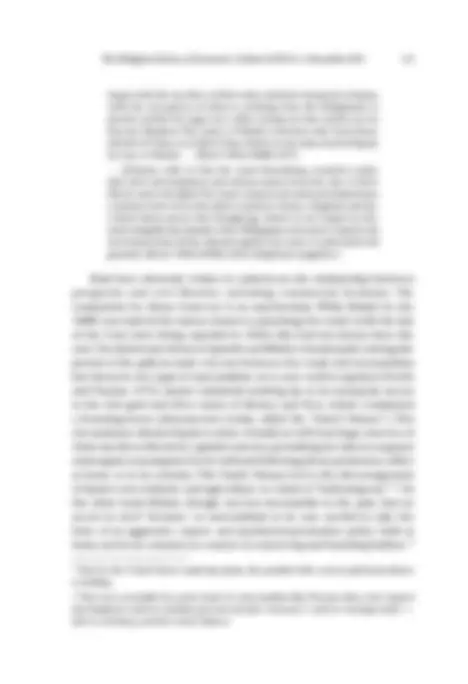
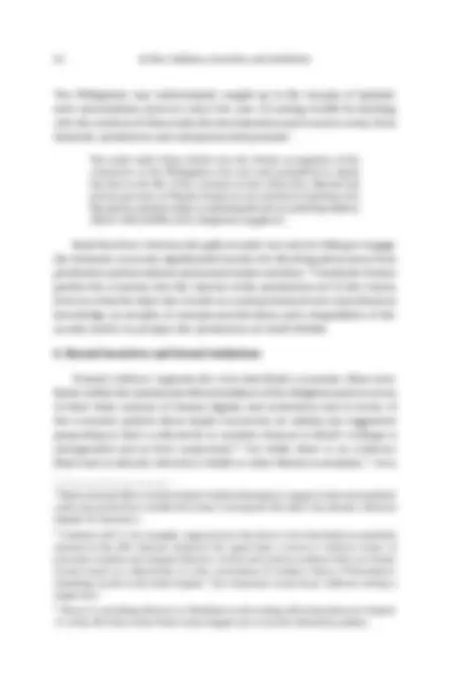
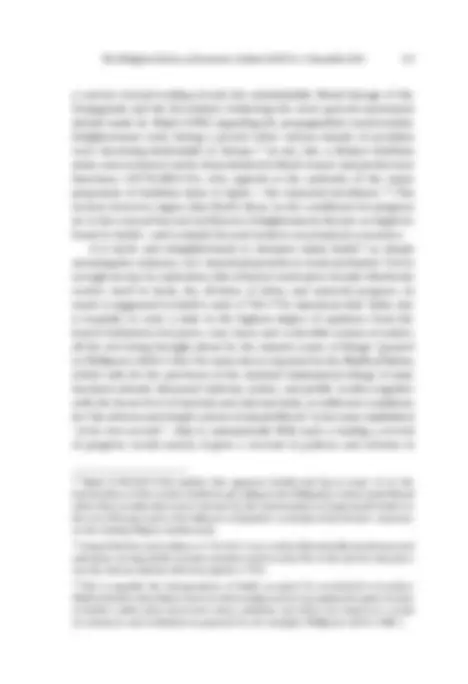
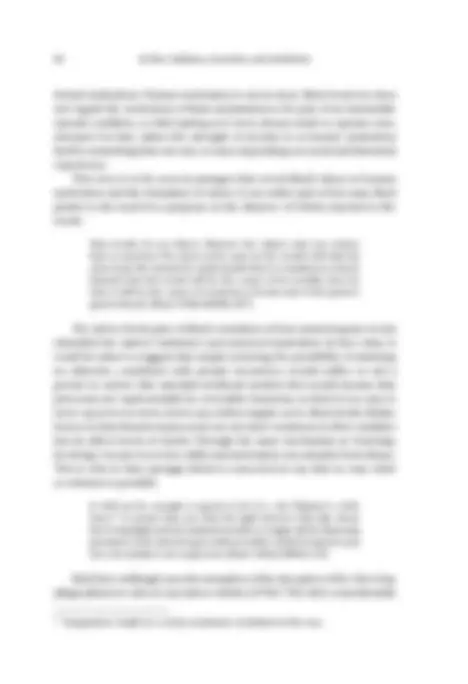
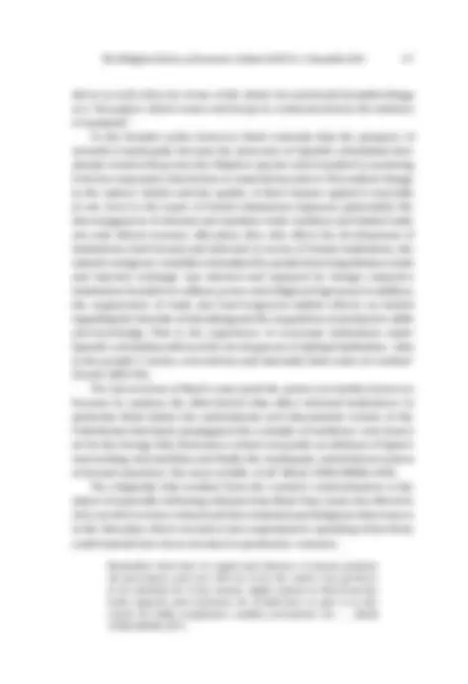

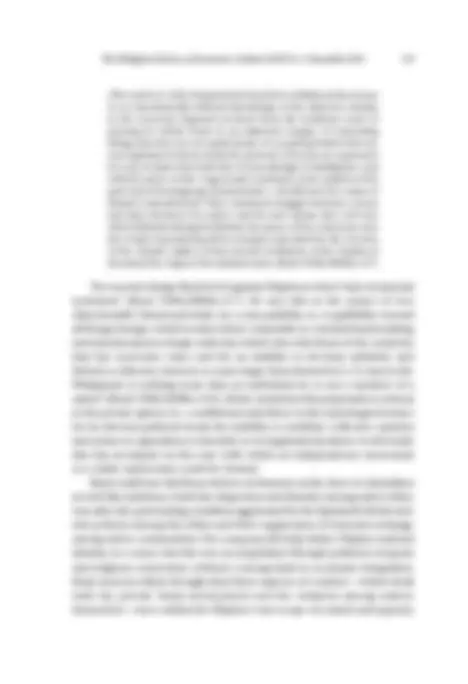
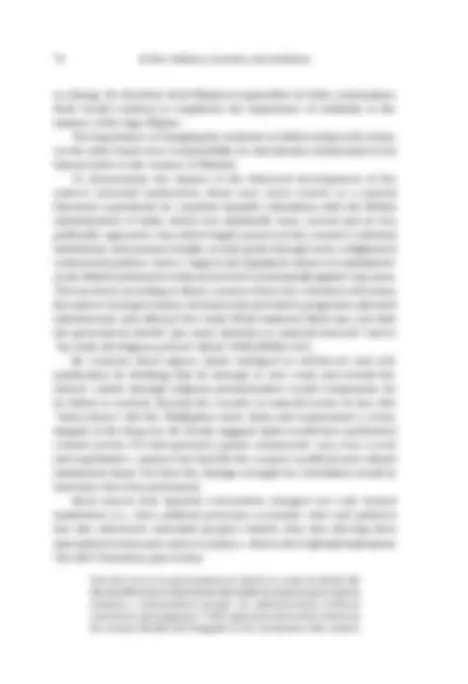
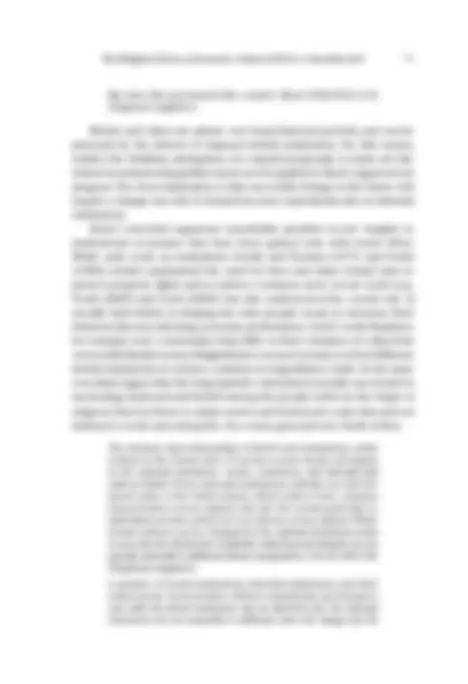
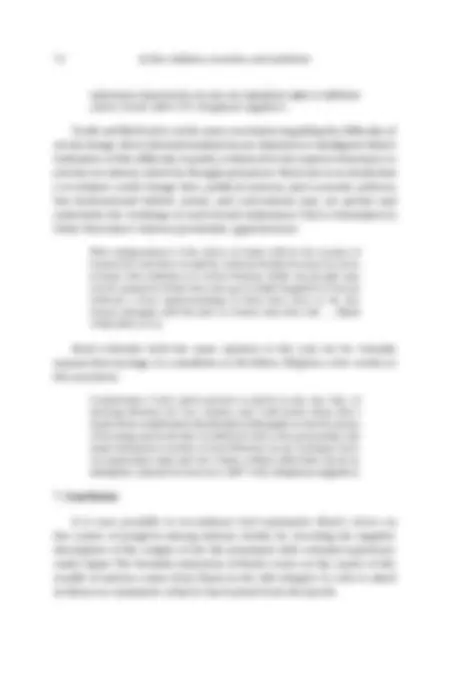

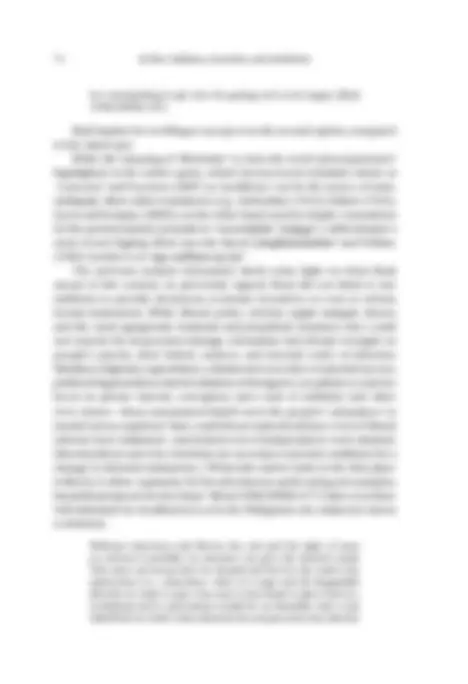
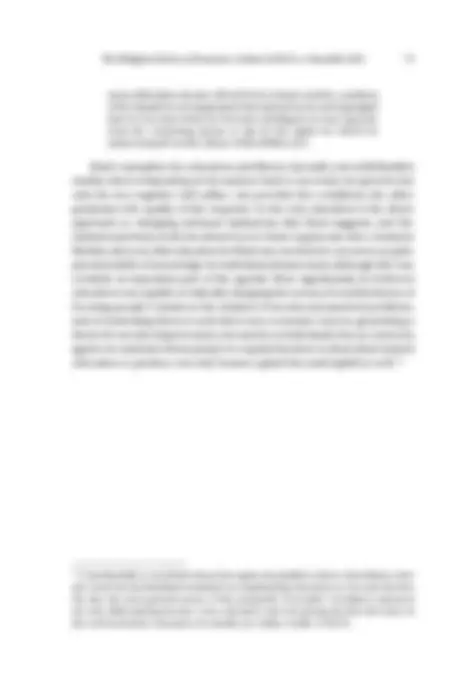
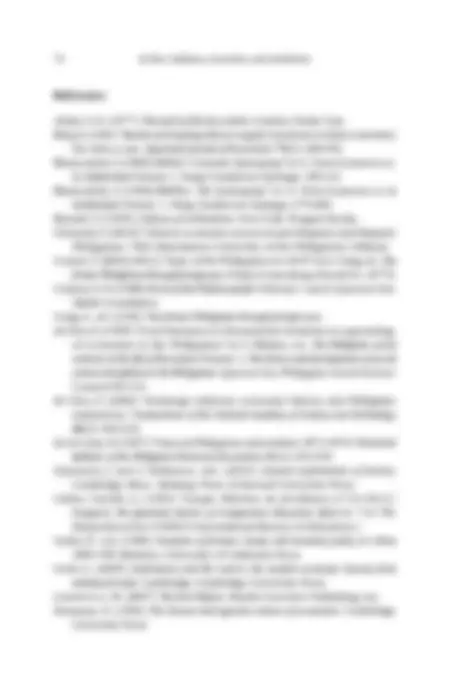
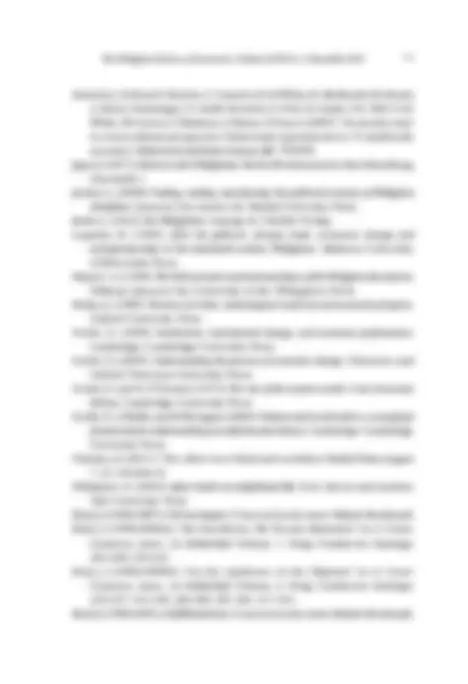
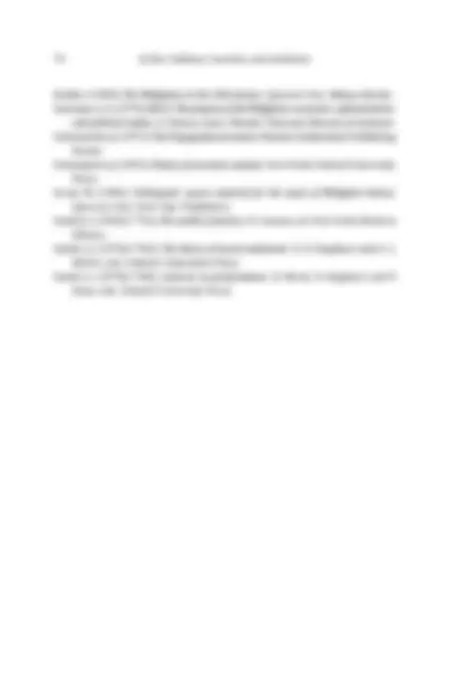


Study with the several resources on Docsity

Earn points by helping other students or get them with a premium plan


Prepare for your exams
Study with the several resources on Docsity

Earn points to download
Earn points by helping other students or get them with a premium plan
Community
Ask the community for help and clear up your study doubts
Discover the best universities in your country according to Docsity users
Free resources
Download our free guides on studying techniques, anxiety management strategies, and thesis advice from Docsity tutors
his 1890 essay “On the indolence of the Filipinos,” suggests that Rizal's economic views were in general agreement with those of Enlightenment thinkers ...
Typology: Assignments
1 / 38

This page cannot be seen from the preview
Don't miss anything!































The PhiliPPine Review of economics Vol. XlVIII No. 2 December 2011 pp. 41-
PRe
(^1) I thank Marina Durano for useful discussions on some points. I take responsibility for any remaining errors and omissions.
School of Economics University of the Philippines Diliman
Rizal’s economic ideas are among the least studied aspects of his work.A careful reading of his writing, however, particularly his 1890 essay “On the indolence of the Filipinos,” suggests that Rizal’s economic views were in general agreement with those of Enlightenment thinkers regarding the basis of progress, which was to be found in freedom of commerce and a government that was effective in its inherently limited sphere. The apparent absence of specific recommendations or hints of economic policy did not reflect a lacuna in Rizal’s thought but a proper concern for the prior and more important issues of specifying the minimal institutional foundations of a functioning economy—namely, the maintenance of peace, security of property rights, and facilitating the free movement of people and goods. Rizal went beyond Smithian minimalism, however, since he viewed the Spanish colonization as having not only severely undermined incentives but also destroyed hitherto promising and sound informal institutions that would have supported material progress among the subject Filipinos. As a result, Rizal viewed the reform of formal institutions as a necessary but insufficient condition for promoting the country’s economic progress. This was another important reason for his insistence on the need for mass education.
JEL classification : B12, B52, N35, N43, N Keywords : institutions, incentives, pre-Hispanic Philippines, Spanish colonization, Rizal
42 de Dios: Indolence, incentives, and institutions
(^2) A good summary of these and related writing about the Philippines as well as Indonesia
and Malaysia is provided by Alatas [1977]. (^3) Montesquieu propounded a geographical theory of government in his De l’esprit des lois (1750), while Kant’s views on climate and races are to be found in Physische Geographie (1801).
Rizal’s famous essay “Sobre la indolencia de los Filipinos” was serialized in six issues of La Solidaridad from 15 July to 15 September 1890. Its immediate purpose was to disprove the long-standing and often-repeated notion among Spanish circles and other foreign observers that the natives of the Philippines were “indolent” and that this distaste for labor was the main reason for the country’s underdevelopment. In the process of examining Rizal’s defense, however, we confront some of the clearest statements of his ideas on economic progress and its opposite, underdevelopment. The indios ’ supposed disdain for work was a perennial recrimination of the Spaniards living in the Philippines, an opinion eventually echoed even in the writings of occasional early visitors to the country who bothered to record it, such as the Italian Careri (1696) and the Frenchman Le Gentil (1781). For the Filipinos, however, the locus classicus comes from the pen of the friar Gaspar de San Agustin (1725) who, supposedly drawing on his 40-year stay in the country, prepared a sort of “field guide” to the country, which summarily described the natives as “fickle, malicious, untrustworthy, dull, and lazy … [T]hey have little courage, on account of their cold nature, and are not disposed to work.”^2 By the mid- to the late 19th century, the idea of indio “indolence” had become a commonplace and a self-evident fact, partly helped along no doubt by geographical-climatic hypotheses entertained even by well- known Enlightenment intellectuals such as Montesquieu and Kant.^3 Even presumably better-informed writers, such as Sinibaldo de Mas (1842), did not cast doubt on the fact that “indolence” prevailed but were at most ambivalent about the reasons for its emergence. Indeed, de Mas reproduced lengthy excerpts from San Agustin’s letter to show “how little the individuals who now occupy us have changed since that time.”Among other things, de Mas
44 de Dios: Indolence, incentives, and institutions
acknowledgement of Gregorio Sancianco y Goson,^6 who had treated the matter almost a decade earlier in a book entitled El Progreso de las Filipinas ( parte economica ) [1975(1881)], which was primarily a tract on tax reform.^7 Sancianco argued against the prevailing system that relied almost entirely on indirect taxes 8 and instead advocated direct taxation, making the system not only more efficient at generating revenues but also less discriminatory. Indeed, Sancianco asserted that the tax system’s arbitrary and racist nature was a big reason for its inefficiency. Sancianco regarded the lack of public revenues as the principal obstacle to developing the country’s physical infrastructure and education and hence also the “material, moral, and intellectual advancement of those Islands” [Sancianco 1975(1881):ix]. It was in arguing for a direct and uniform tax on rural property, however, that Sancianco had to confront the issue of “indolence.” One of the objections to a land tax was the allegation that rural property was nonexistent, as could be seen in the fact that much land remained uncultivated and that the Filipinos, owing to their indolence, readily abandoned their lands or mortgaged them. In a response with an eerily modern ring to it, however, Sancianco points out that that this situation was really due to the instability of property rights of Filipino landowners, who were highly vulnerable to land usurpers with privileged access to the justice system:
(^6) Sancianco, together with Felipe Buencamino and Paciano Rizal, belonged to the first generation of Manila students who were members of La Juventud Escolar Liberal. Their activism, clandestine at times, was encouraged by their elders in the Comite de Reformadores, a group of Filipinos including Fr. Jose Burgos, which demanded reforms under Spain’s liberal constitution of 1869 [Corpuz 1989b:5-6]. Sancianco went on to take a doctorate in laws from the University of Madrid and was probably the first Filipino to have gained some formal training in economics [de Dios 1999]. Soon after his return to the Philippines in 1884, he was arrested on trumped-up charges in connection with the Tayug incident of that same year. (^7) In a letter dated October 1882, Rizal writes his brother Paciano to inform him that
Sancianco,“the author of El Progreso ,” is soon returning home. This suggests either that Rizal was unaware of the earlier connection between Paciano and Sancianco, or that the earlier Manila connection might not have been close. (^8) Among other things, Sancianco [1975(1881):28-29] espoused free trade through the eventual abolition of import and export taxes and the dissolution of the customs house “which today is the greatest barrier to the growth of the foreign trade of the Philippines, which cannot compete with the neighboring free ports of Singapore and Hong Kong.”
The Philippine Review of Economics, Volume XLVIII No. 2 December 2011 45
[T]he lack of documents of ownership not only of rural but also of urban property exposes [the owners] to the greed of clever usurpers who avail themselves of the influence of local bosses who are prevalent there, leaving the aggrieved, weak and ignorant landowners no other alternative but to give up their lands and seek other lands to clear, for the usurpers always win the courts, whether through their material and moral influence or because of the judicial practice prevailing there. [Sancianco 1975(1881):37]
He notes in particular that a flawed and biased justice system makes it difficult for bona fide but poor landowners to protect their rights.^9 At a more general level, however, Sancianco’s main point was that the absence of economic stimulus and high transaction costs (due to almost nonexistent public infrastructure, insecure property rights, an absence of peace and order, and distorted prices) were the real reasons that neither initiative nor markets existed:
[B]ut, what can be expected of farmers without zeal for lack of stimulus and the total absence of roads? What benefits would these farmers derive from their labor if they cannot sell their produce or if they have to carry them to the markets, spending five or six days on the roads they themselves have to cut through forests and rivers, through regions still inhabited by fierce infidels, in order to sell at prices insufficient either to compensate them for their labor or for the risks they run? The distant towns of the provinces of Nueva Ecija, Nueva Vizcaya, Isabela and others located in Central Luzon encounter these sad realities. Why would not their inhabitants be lazy? How could these towns become rich or their population increase? [Sancianco 1975(1881):30] … The economic ills of the Philippines are due not to the scarcity of farmhands but rather to the lack of stimulus to her farmers … [Sancianco 1975(1881):30]
(^9) “[B]ut if he is poor … what means will he have, what lawyer, what solicitor or proxy will guide him, defend him and represent him with moderate interest in a suit as costly as it is eternal, even if it is declared a poor man’s suit, what clerk of court or employees of the court would pay attention to a poor devil?” [Sancianco 1975(1881):37-38]. Schumacher [1973:25] is one of the first to give Sancianco the prominent treatment due him, although the words Schumacher reproduces are unfortunately not Sancianco’s but a quotation from Jaime Aguis, whose opinion Sancianco [1975(1881):166] cites.
The Philippine Review of Economics, Volume XLVIII No. 2 December 2011 47
With hindsight, however, it was too much to expect Sancianco’s earlier effort to suffice. First, in terms of form, Sancianco’s was a technocratic treatise on the arcane subject of taxation (in book form at that), of obviously limited circulation, and therefore inaccessible to a general readership. It was of little avail compared to the constant stream of racist propaganda in the popular press by the Quioquiaps and Baranteses. A second important reason, however, was that by 1890—almost a decade later—some of the force of Sancianco’s defense had already become vitiated. Whether through his influence or (more likely) not, some of the reforms Sancianco proposed had already been implemented by the Spanish regime. The most significant of these was the abolition of the tobacco monopoly in 1881 (the very year Sancianco’s book was published, and the subject of Padre Damaso’s trepidation in the Noli ) and its replacement by the cedula personal , a poll tax now applicable to Spaniards and Filipinos alike. Both Spaniards and Filipinos were now also subject in principle to the same forced-labor requirement—indeed reduced from 40 to 15 days in a year—although a monetary commutation was allowed for people of means [de la Costa 1967]. In 1887 the Spanish Penal Code and in 1889 the Code of Commerce and Civil Code became applicable to the country [Guerrero 2007:187-188], which in principle placed indios and castilas on equal footing.Those who carped at the Filipinos could therefore argue that the country’s persistent underdevelopment notwithstanding the adoption of some of Sancianco’s suggested reforms undermined the thesis that indolence was due simply to oppressive and discriminatory policies. Equally, of course, those siding with Sancianco could argue that this only meant that the reforms implemented did not go far enough, or that they existed only on paper.This implicitly unsettled debate was almost certainly part of the reason that Rizal had to concede that contrary to the testimonies cited by Sancianco, others of greater or lesser authority could be adduced [Rizal 1996(1890b):323]. Such “testimonies to the contrary” moreover included not merely the predictable carping of ignorant and self-serving friars and bureaucrats and of racists such as Quioquiap—or the “irritating” Spanish writers Sancianco dealt with earlier—but also unrefuted observations by “serious and disinterested persons” that included non-Spaniards like MacMicking and Bowring, and, more weightily, even reputable scholars like Jagor. Apart from external circumstances, however, the third impulse for Rizal’s essay was an internal one: he had new material and a new argument. By
48 de Dios: Indolence, incentives, and institutions
early 1889, Rizal had completed most of the research 11 connected with his project to annotate and reissue Morga’s Sucesos de las islas Filipinas. He had before him, therefore, evidence not available to Sancianco or other earlier writers, and a historical argument that addressed a weakness in Sancianco’s method. The lawyer-economist’s arguments were implicitly based on a kind of comparative statics founded on axioms of rationality, as well as specific counterexamples that sought to disprove broad generalizations. The indolence phenomenon was therefore explained as a rational response founded on certain parameters identified with specific oppressive or misguided Spanish policies—for example, the tobacco monopoly. Removing or changing those parameters, therefore, was a sufficient condition for one to expect a shift in behavior. Sancianco’s counterexamples, on the other hand, took the following form: Filipinos are not by nature indolent, since, say, reputable person so-and-so observes them to be industrious rather than lazy in such-and-such circumstances. As Rizal noted, however,“contrary evidence” could also be cited in the work of disinterested parties, as well as in the arguable lack of significant change notwithstanding the introduction of partial reforms beginning almost a decade earlier. One might add that the resort to counterexamples is also less than persuasive since, to begin with, social-science arguments are famously difficult to frame as falsifiable either-or propositions. Social- science propositions are inherently statistical or probabilistic, and therefore not readily amenable to Popperian falsification.^12 A counterexample that showcased non-indolent Filipinos would indeed suffice to refute the crude racist generalization that all Filipinos are indolent, but not the essentially statistical observation of a more careful scholar who might say that most or unusually many Filipinos are indolent. Rizal therefore needed an approach that would explain not only the emergence of indolence but also its hysteresis despite apparent reforms of the policy environment. He found this in a historical-institutional approach that relied on a before-and-after or with-without comparison. Indeed, he suggests as much in the Noli , when a “blonde young man” asks:
(^11) Guerrero [2007(1961):221] quotes Rizal’s January 1889 letter to del Pilar saying “my manuscripts are finished.” See also Clemente’s article in this issue. (^12) On the problems of Popperian falsificationism in economics, see, for example, Hausman [1992:172-191].
50 de Dios: Indolence, incentives, and institutions
exist?” [Rizal 1996(1890b):325].) The heat and humidity of the tropical climate is a natural discouragement to arduous labor, at the same time that the lush environment relative to simpler needs makes such excessive exertion unnecessary for survival. 14 Rizal was acquainted with Darwinian evolutionary theory^15 but he clearly regarded this “predisposition” not as a heritable trait but as a behavioral adaptation. (“Indolence in the Philippines is a chronic sickness, but not a hereditary one” [Rizal 1996(1890b):341].) Part of the evidence of adaptation he offers is his sarcastic observation that even Europeans and Chinese, upon settling in the tropics, reduced their labor input given the climate. Even as he concedes the propensity for indolence due to climate, however, Rizal makes the more important point that such predispositions can be modified and overcome by institutions. To demonstrate this, he deploys his research into early Philippine history to show that institutions in the preconquest tribal communities and polities had already succeeded in eliciting an ethos of work that led to a thriving commerce and industry. Significantly, the examples he provides deal primarily with the thriving trade of the Philippines with neighboring countries (China, Siam, Annam, Borneo, and the Moluccas). Particularly significant were the descriptions of the various modes of Chinese-Philippine trade he found in Zhao Rugua’s 13th-century work. 16 Rizal also quotes Pigafetta’s description of the Southeast Asian trade-based wealth of the islands visited by Magellan’s fleet, as well as the testimonies of early observers such as Morga (and even the infamous Fray Gaspar de San Agustin), suggesting that the country before the conquest had attained a level of culture, crafts, wealth, and maritime
(^14) On this point, he echoes Jagor’s [1873:32] earlier description of the Philippines as
“richly endowed islands” that allowed a person to live a life of ease, with the ability to meet simple wants, in the absence of “pressure from above, drive from within, and every stimulus from without.” (^15) In chapter 32 of the Fili Rizal [1996(1891):268] refers to “the law discovered by Darwin” which involves “the female surrendering herself to the fitter male, to the one who adapts himself to the environment in which he lives.” How much of this is literary irony and how much reflected Rizal’s own view is an open question. One must remember Darwinism was far from being the orthodoxy in scientific circles, and even Rudolf Virchow—Rizal’s most prestigious scientific patron in Berlin—rejected the idea of a common ancestor of apes and humans. (^16) Also written as Chao Ju-Kua. Zhao’s work, Zhu fan zhi , fortuitously became available in German translation in the year prior to Rizal’s essay.
The Philippine Review of Economics, Volume XLVIII No. 2 December 2011 51
trade comparable with, and indeed an integral part of, that prevailing in the rest of Southeast Asia. Rizal was especially keen to emphasize the close and self-evident commercial and political (indeed even kinship) 17 relations between the Philippines and the rest of Asia. Much more has since come to be known and written about the connection between commercial exchange and the emergence of institutions.We know that well before Rizal, and a decade before the Wealth of Nations , Adam Smith already observed the close connection between trade and ethical behavior.^18 The significant modern empirical contribution in this respect, however, is probably the work of Henrich et al. [2005], which shows how reciprocity and the trust of strangers are enhanced among societies with greater exposure to markets. Henrich and his collaborators document how across many types of small-scale societies, those with greater trading experience are more likely to offer less selfish and less shortsighted bargains in the context of experimental ultimatum- and dictator-games.As we now know from institutional economics (e.g., North [1990] and Greif [2005]), eliciting reciprocity and building a reputation for honest dealing in anticipation of commercial gain are an important step in the enforcement of contracts and protection of property, which in many cases leads to the development of more general third-party enforcement mechanisms, including the state.These hypotheses and findings are exactly in the spirit of Rizal’s point that the indigenous peoples’ exposure to and conduct of long-distance trade led them to attain not only a level of affluence but also a political sophistication comparable with—and recognized as such by— other polities in Asia. Recent research, notably by Scott [1984] and Junker [2000], has modified the basis of Rizal’s argument but also strengthened it in the process. Junker [2000], for example, suggests that the preconquest trade
(^17) Rizal [1996(1890b):343] notes Pigafetta’s account of his encounter with a noble who would later emerge as Manila’s Rajah Matanda, whose maternal grandfather was the sultan of Borneo, who married a Bornean princess, and who had actually commanded a naval force in Borneo. (^18) Smith’s observation is well known: “Whenever commerce is introduced into any country, probity and punctuality always accompany it. These virtues in a rude and barbarous country are almost unknown … This is not at all to be imputed to national character, as some pretend … It is far more reduceable to self interest, that general principle which regulates the actions of every man, and which leads men to act in a certain manner from views of advantage” [Smith 1978(1766):528].
The Philippine Review of Economics, Volume XLVIII No. 2 December 2011 53
therefore, institutional competition ensued among coastal communities in order to attract the much-desired China trade in status goods. In the process, commercial and political institutions were developed—from workable hostage systems to more developed state-guaranteed systems of consignment, described by Zhao Rugua—that served as credible commitment-mechanisms to support trade between foreign (Chinese) merchants and natives [Clemente 2010]. Indeed, the China trade was sufficiently lucrative that native coastal polities sent competing trade missions to China stretching from the 10th to the 15th centuries 21 in order to secure exclusive or privileged trading relations—indirectly also pointing to a cultural and technological sophistication enough to field oceangoing vessels [Junker 2000:215-217]. Subsequent work, therefore, appears to bolster Rizal’s main points: namely, (a) that the preconquest natives of the Philippines had already overcome any “lamentable predisposition” to indolence through institutions of varying sophistication, especially those facilitating and supporting long-distance trade; (b) that maritime trade had in turn stimulated internal exchange, domestic production, crafts specialization, and significant wealth accumulation—an instance of Smithian growth;^22 and (c) that the preconquest levels of economic and cultural achievement in the islands were by no means inferior to what was being achieved at the same time in other parts of archipelagic Asia, particularly Borneo and the Moluccas. Rizal was setting the stage for an argument effectively based on a “natural historical experiment,” anticipating a method that has only recently attracted some interest [Diamond and Robinson 2010:267-269], where differences in outcomes between, say, the Philippines and other colonized countries, were due less to differences in their initial conditions and more to “perturbations,” in this case Spanish colonialism. Rizal thought this was also an adequate response to the unfavorable comparisons between contemporary Filipinos and other colonized Southeast Asians made by scholars like Jagor. For if no
(^21) Scott, as summarized by Junker [2000:215-217], cites various Chinese sources documenting trade missions sent from Mindoro ( AD 982), Butuan (regularly from AD 1001), and subsequently from Manila (beginning AD 1373) and Sulu (beginning AD 1417). (^22) The term is due to Mokyr [1990], who distinguishes between growth based on factor accumulation (Solovian), technological progress (Schumpeterian), and expansion of markets leading to specialization (Smithian). Virtually all growth before the Industrial Revolution was Smithian growth.
54 de Dios: Indolence, incentives, and institutions
significant differences in either achievement or potential existed between preconquest natives and other Southeast Asian peoples, then any observed inferior qualities in contemporary Filipinos must be attributed to the experience of the conquest and colonization itself.^23
To explain the stark change between the industriousness, adventurousness, and progressive potential of preconquest Filipinos and their concededly backward and indolent state under Spanish rule, Rizal’s essay adduces three groups of factors, all of which he traces to colonialism: (a) the deterioration of national and personal security, (b) the disincentives to labor and enterprise owing to misguided and discriminatory policies, and (c) the degradation of morale and the miseducation of the native population.
An important immediate negative consequence of colonialism was depopulation and heightened insecurity, which occurred as a direct offshoot of the conquest itself. Spain waged internal wars of “pacification” against native communities, which took a heavy toll on human life. Even with the conquest completed, however, the subjugated peoples were burdened to the breaking point with tributes, imposts, and forced labor, the most notorious case of which was the cutting of timber ( cortes de madera ) to build men-of-war and the Manila-Acapulco galleons [Rizal 1996(1890b):367].All these contributed to a continuing decline in population. The subjugated population was also conscripted to fight off Spain’s enemies and to wage its regional expeditions, with the native menfolk serving as soldiers and rowers—this, too, obviously resulted in high casualties.The intensification of slave raids from the south, which predated the arrival of the Spaniards, was another factor in depopulation owing to the abduction of large numbers of people.
(^23) In the same sense of a natural experiment, Rizal compares the industry of the
contemporary non-Christianized tribes with the observed indolence of the colonized communities, and he paraphrases Hans Mayer’s conjecture that the former might well “become indolent when they in turn should accept Christianization and a paternal government” [Rizal 1996(1890b):345].
56 de Dios: Indolence, incentives, and institutions
[Corpuz 1989:526]. It is remarkable for Rizal (as usual), therefore, to have keenly sensed the issue’s importance despite the paucity of data at hand. A reduction of the labor force pushes the production-possibilities frontier inward, particularly since labor (relative to land) is the scarce factor. The other consequence of physical insecurity, however, is to push the economy below the production frontier. Independent of mortality, the misallocation of labor to less productive activities also results in lost output. Under this category of losses one may subsume Rizal’s observations of inhabitants abandoning their fields and deserting the towns in order to escape the harsh exactions of colonization itself ( remontados ) or in order to avoid the depredations of Moro slave traders and pirates, as well as the reallocation of labor to completely unproductive activities such as war and timber cutting. For even without the loss of life, the abandonment of towns and fields and the reversion to upland farming and self-sufficiency means forgoing the higher output from more fertile lowland fields and the opportunities for greater trade and division of labor associated with agglomeration in towns. Labor, in short, is pushed out of activities where its marginal productivity is higher. In pointing to the economic losses stemming from insecurity in the face of invasion and depredation, therefore, Rizal implicitly highlights the Spanish regime’s failure to provide the first of those three institutional “duties of a sovereign” defined by Adam Smith—namely, national defense.This neglect was compounded by the government’s interdict against the people’s right to arm and defend themselves for fear that the weapons could be turned against Spanish rule itself.
While geography predisposes to indolence and an unfortunate turn of history has rekindled it, Rizal [1996(1890b):391] notes that a further category of causes “sustain and foster” indolence.Among these he includes restrictions of trade and commerce, beginning with the earlier galleon trade; government corruption and red tape; antibusiness and anticompetitive policies by both government officials and the frailocracy; and the dissipation of capital through gambling and religious observances. At a more general level, these observations may be subsumed under institutions (or the lack thereof) that affect economic incentives, which Rizal describes as “the constantly lessening encouragement that labour has met” [Rizal 1996(1890b):391] or more generally as the “lack of material
The Philippine Review of Economics, Volume XLVIII No. 2 December 2011 57
inducement” ( falta de aliciente material ) [Rizal 1996(1890b):391]. Among the most basic, Rizal’s enumeration of testimonies regarding the historical abuses of the encomenderos deals with the violation of the natives’ personal and property rights, a fact traceable to racially discriminatory policies under Spanish rule. At their most severe and blatant, these consisted of arbitrary takings by government and religious authorities:
The sordid return the native gets from his work ultimately discourages him. We know from history that the encomenderos , after reducing many to slavery and forcing them to work for their benefit, made others give up their merchandise for a trifle or nothing at all, or cheated them with false measures. [Rizal 1996(1890b):393]
Rizal’s direct quote from San Agustin is striking from the perspective of the second of the minimal duties Adam Smith expected of a sovereign— the administration of justice and enforcement of contracts; for it speaks of encomenderos “who in administering justice have treated the natives as their slaves and not as their children, and looked after their own interests only at the expense of the wretched fortunes and lives of their charges” [in Rizal 1996(1890b):393]. (Emphasis supplied.) Rizal shows how these abuses of authority continued until his own time. (Sancianco already provided contemporary descriptions of land usurpation through spurious land titling.) One can only speculate, however, why Rizal refrains from recounting his own family’s then-current experiences. 27 The dispute over rental payments and property rights between the Dominicans and their Calamba tenants had been festering since 1885 and came to a head in late 1891 with the forcible eviction and exile of the tenants (notably including Rizal’s family) and the destruction of their property. These events would become the most sensational case illustrating the reality of friar dominance and of government abuse for years to come—a clear case of property-rights disputes severely disrupting production and destroying investment. In the event, Rizal felt far freer to denounce these occurrences after the worst had come to pass and he felt he had nothing to lose. In the Fili —published in the same year that the events came to a
(^27) Rizal excuses the omission by stating he wants to avoid the charge of partiality from critics.A more plausible reason might be a wish to avoid inviting official retaliation or prejudice in cases that were then still pending before the authorities.
The Philippine Review of Economics, Volume XLVIII No. 2 December 2011 59
peddling, their sloth and stupidity, and readiness to suspect sedition and rebellion behind every enterprise: “how many documents, how many processes, how many stamped papers, how much patience is needed to secure a permit for an enterprise from the Government!” [Rizal 1996(1890b):393]. In this, Rizal echoes Sancianco’s compelling (because firsthand and detailed) narration of the challenges confronted by the simple enterprise of sending a casco (a small river cargo vessel) from Malabon to Manila—a trip of only seven kilometers but which took “at least twelve days and sometimes a month and a half” owing to the innumerable authorizations and clearances required and the shuttling from one office to the next, with “tips” being required at almost every step [Sancianco 1978(1881):96-98]. These textual examples substantiate our argument that a good part of Rizal’s institutional critique of colonialism can be understood as proceeding from an 18th-century liberal perspective very similar to Adam Smith’s. In particular, the three minimal duties of a sovereign Smith enumerated in the Wealth of Nations in the last paragraphs of book 4 were:
[F]irst the duty of protecting the society from violence and invasion of other independent states; secondly, the duty of protecting … every member of society from the injustice or oppression of every other member of it, or the duty of establishing an exact administration of justice; and thirdly, the duty of erecting and maintaining certain public works and certain public infrastructure which it can never be in the interest of any individual or small number of individuals to erect and maintain. [Smith 1994(1776):745]
The previous paragraphs documented the regime’s failure in the first two of these duties.The mapping is completed by Rizal’s [1996(1890b):397] reference to how “the apathy of the Government itself toward everything in commerce and agriculture contributes not a little to foster indolence.”A decade before, Sancianco [1975 1881):xi] was already specific about the country’s urgent need for full-time provincial governments,“communications facilities that commercial transactions require”;“public works that facilitate the transport and free circulation of [the Filipinos’] products”; “schools necessary for your moral and intellectual development”; and “officers of justice to defend your property against greed and bad faith.” Toward the end of his essay, Rizal virtually repeats this enumeration when he advises the Spanish regime at a minimum to emulate the example of the British in India and
60 de Dios: Indolence, incentives, and institutions
build roads, lay our highways, construct railroads, foster freedom of trade … let the government send out intelligent employees to foster industry; just judges, all well paid, so that they be neither yes-men nor mercenary … [Rizal 1996(1890b):421]
He indicts the government because it “does not help either when a poor crop comes, when the locusts sweep over the fields,^29 or when a typhoon destroys in its wake the wealth of the soil; nor does it take any trouble to seek a market for the products of its colonies” [Rizal 1996(1890b):397]. Clearly this enumeration refers to the government’s role in providing collective goods where private initiative fails: it therefore covers the mapping of Rizal’s critique onto the Smithian institutional triple of national defense, the administration of justice, and public-goods provision.
That Rizal’s critique should be consistent with liberal 18th-century ideas should come as no surprise from the aspect of both intellectual genealogy and historical facts. First, the facts: although Spain, especially since the latter half of the 19th century, flirted with somewhat more liberal trading policies in its colonies, these were, at best, sporadic and halfhearted [Robles 1966:273]. For the greater part of colonial history, the economic fate of the Philippines was subsumed to Spain’s mercantilist objectives, and this long history is what Rizal depicts in his historical-institutional critique. It is therefore unsurprising that Rizal’s arguments should parallel Smith’s own criticism of the mercantile system. To the extent mercantilism constitutes any sort of system, it is one that subsumes economics to the objectives of practical power politics and foreign policy [Schumpeter 1954:346ff], referring here of course to the objectives of the colonizing power. A most significant consequence of the conquest, Rizal points out, was the decline—indeed the deliberate
(^29) Jagor [1873:219] reports an old edict requiring local authorities to call out and mobilize the entire population of a locality to exterminate a locus plague. This was obviously ineffective or nonoperational. More frequently, the phenomenon was explained as God’s punishment for human sinfulness [Corpuz 1989:104]. A more effective response was found only much later in the importation of martinez birds from China, which naturally fed on locusts. Even this initiative apparently occurred late, only sporadically, and to a limited degree: in 1824, 1829, and 1852. By the 1930s, however, such birds had become a regular feature of the rice landscape [Kolb 1942:168].